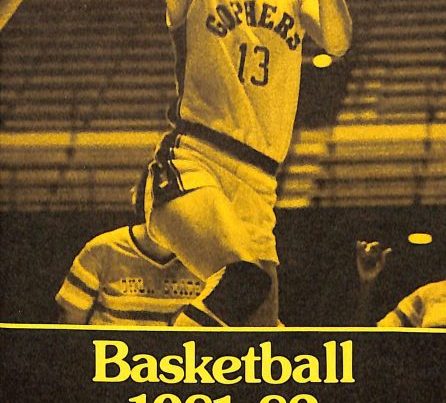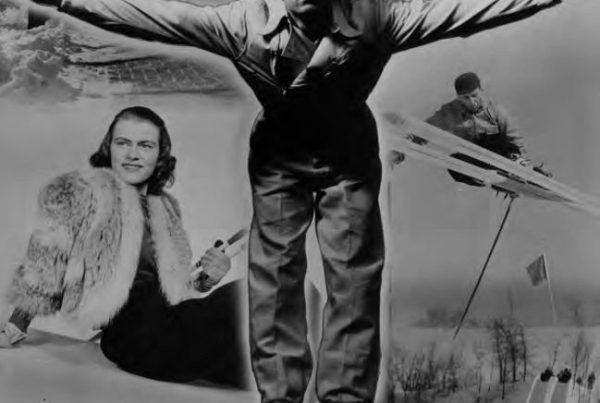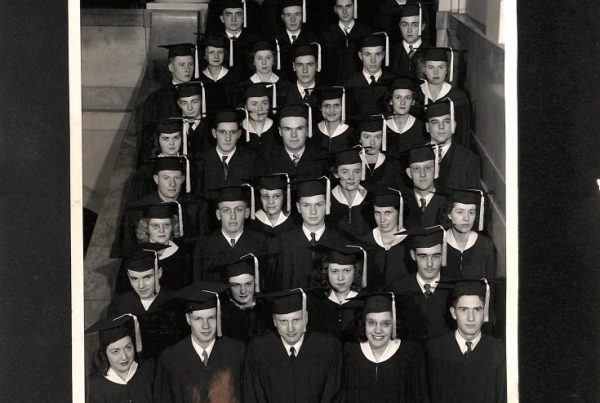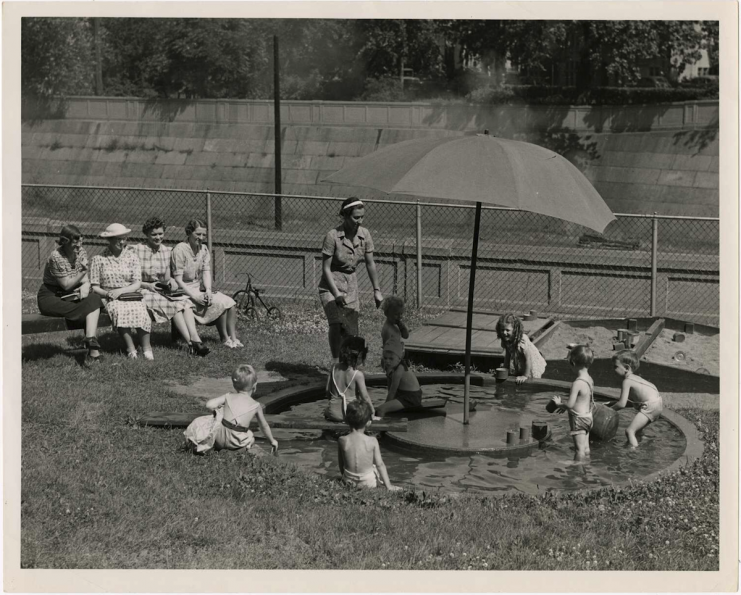
Children attending the University Nursery School play in a wading pool while being observed, 1939. http://purl.umn.edu/81076.
We often describe the University of Minnesota Archives as the institutional memory of the University’s Twin Cities campus. The phrase – institutional memory – comes in part from the mandate we are charged to fulfill as outlined in the Board of Regents Policy on Libraries and Archives:
“The archives shall collect and preserve the historically valuable documentation of the University units and individuals, including faculty, staff and administrators… (The) archives shall be developed and made accessible to all members of the University community and to a broader state and global community…”
Through our day-to-day work, how do we fulfill our mandate?
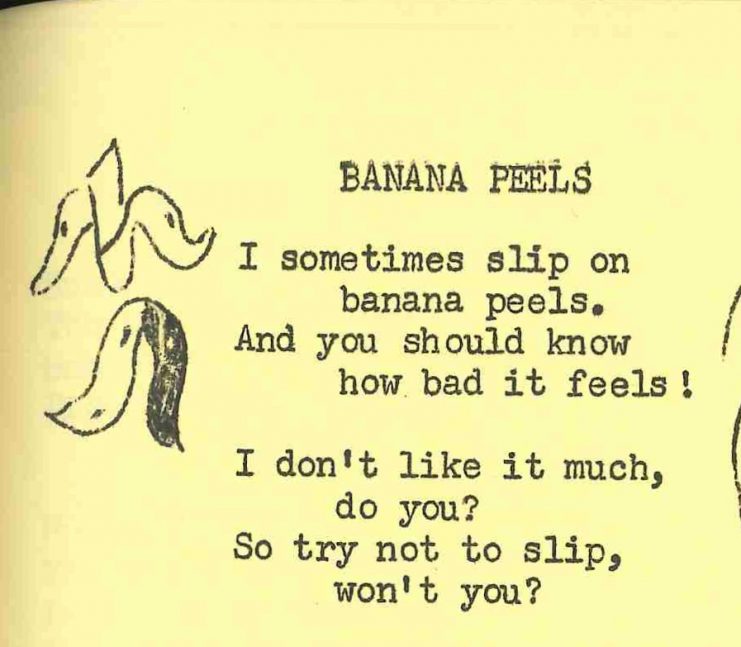
Student poem, “Banana Peels” in the April 14, 1960 issue of “Ideas of the Week” produced by the University Elementary School.

Student editorial, “On Being Different” in the April 14, 1960 issue of “Ideas of the Week” produced by the University Elementary School.
The poem “Banana Peels” and the opinion piece “On Being Different” are two examples. These writings, the poem by a third grader and the opinion piece by a sixth grader at the University Elementary School, were published in the April 14, 1960 issue of Ideas of the Week, a creative writing project conducted at the School by the University’s Bureau of Educational Research.

Cover for the April 7, 1960 issue of “Ideas of the Week” produced by the University Elementary School.
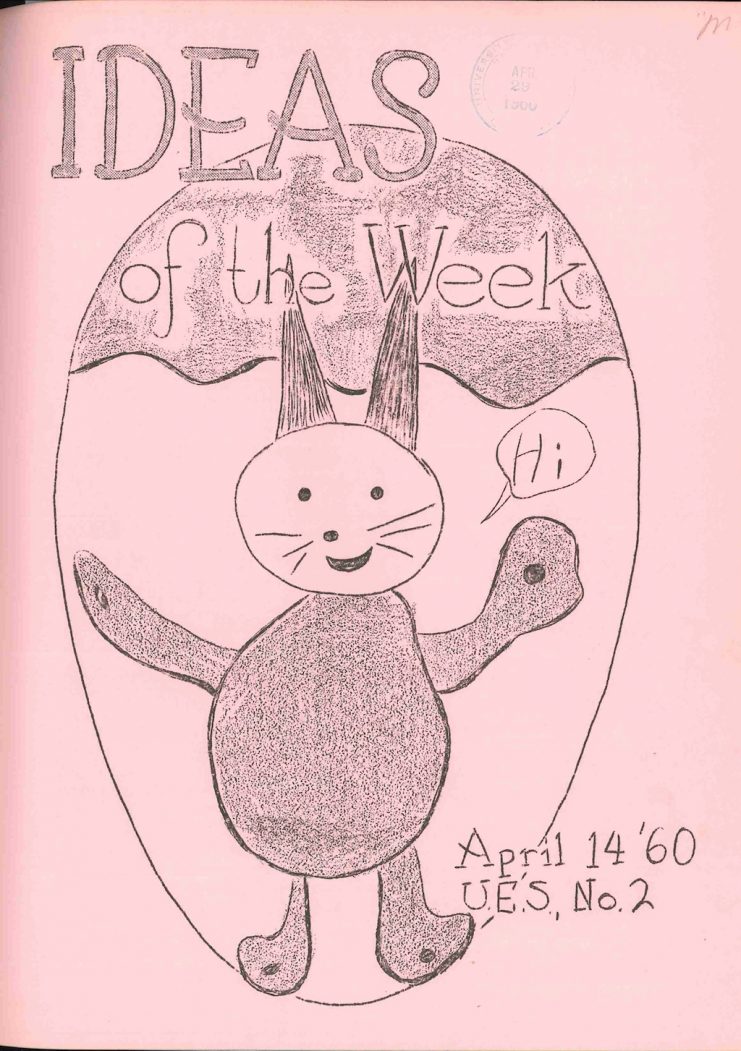
Cover for the April 14, 1960 issue of “Ideas of the Week” produced by the University Elementary School.
The first issue of Ideas of the Week included the following announcement to University Elementary School students,
“The magazine is yours; you named it. We hope to include writings by ALL OF YOU very soon. When an idea comes to you, TRAP it! Jot it down and hand it in on Friday. Remember, there will be five more issues of your magazine. Whether it’s a design or a doodle; a rhyme or a riddle; a song, scheme or story; puzzle, play or pet peeve, write it down! We’d like to feature YOUR creations as IDEAS OF THE WEEK!”
I discovered Ideas of the Week in our collections while working with Cassandra Francisco and her staff from the Institute of Child Development as they researched the history of the University’s laboratory schools.
After working with the archival materials, Francisco commented,
We were blown away by the number of resources that were available to us through the University Archives. In addition to finding some of the specific information we were looking for, we also came to better understand what was happening at the University and in the Twin Cities during the time period we were researching. As a result, we had the context we needed to determine how we could tell our story in the most effective way possible. While working on this project, I also gained a deep appreciation for preserving as many documents as possible — on many occasions, I found important information in titles, summaries, diagrams, and photo captions.

Florence Laura Goodenough was one of the first faculty members hired for the Institute of Child Welfare, the predecessor to Institute of Child Development She served on the faculty from 1925 to 1947. http://purl.umn.edu/81618.

John E. Anderson served as the first Director of the Institute of Child Welfare (1925-1954) and is pictured with children at the Institute in 1955. http://purl.umn.edu/81735.
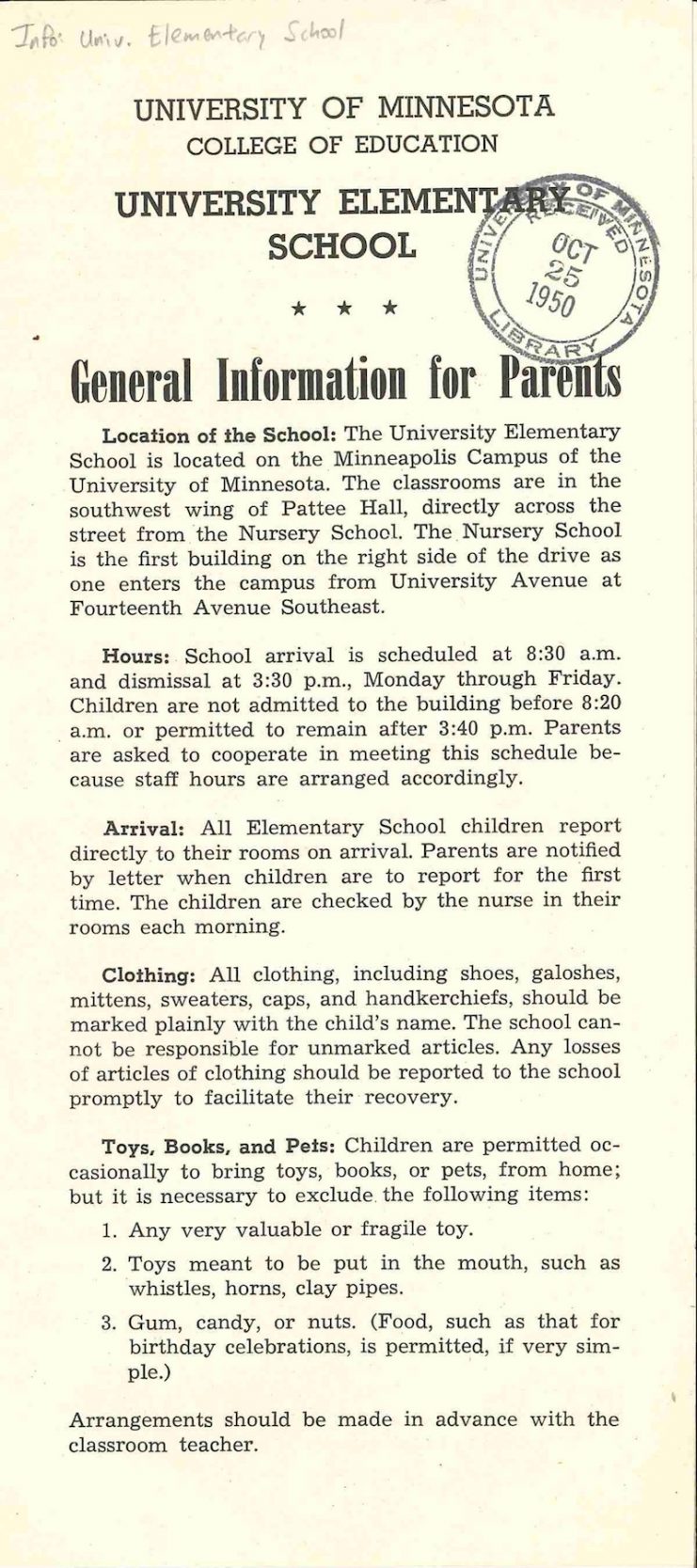
University Elementary School informational brochure from 1950 located in the University Elementary School information file in the University Archives reference collection.
Materials documenting a department’s, college’s, or center’s history can be found in a variety of University Archives collections, so casting a wide research net can yield interesting and usually fruitful results. Not everything will fit the researcher’s needs or they may choose not to use some materials. But the discovery process of gathering together items from various collections helps me as an archivist better understand University history while providing the researcher with a wealth of authentic resources for telling their story.
Working with University communicators to leverage our collections in researching and telling their University story is one important way that University Archives fulfills its mandate to collect preserve and make accessible the historically valuable documentation of the University.
—Erin George is the University Archives Research Services Archivist. To learn more about the University of Minnesota Archives, please visit www.lib.umn.edu/uarchives.



